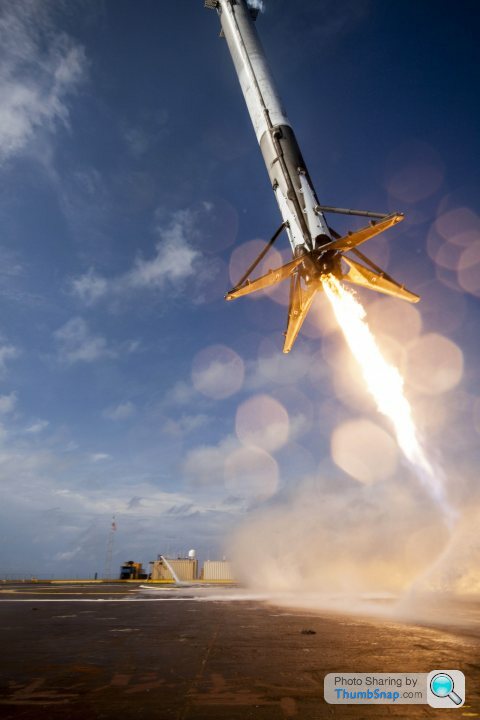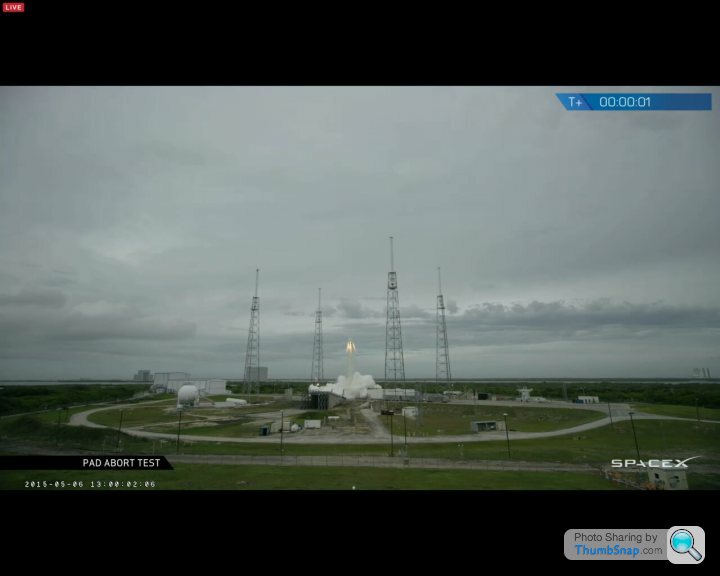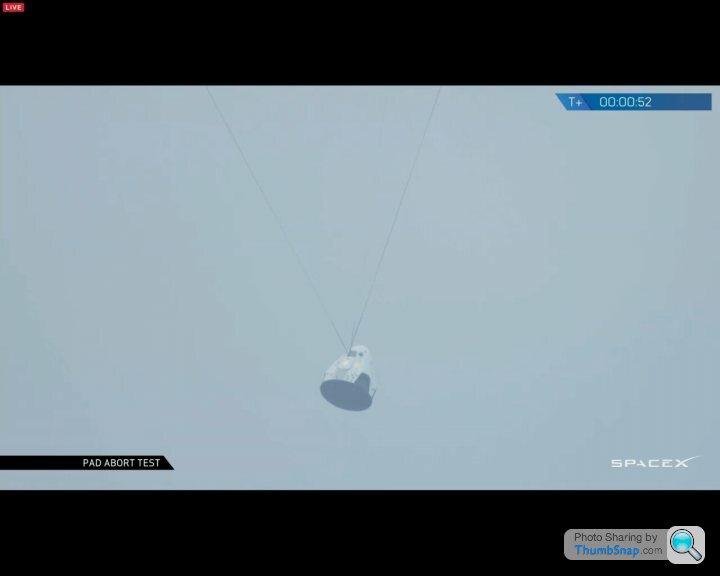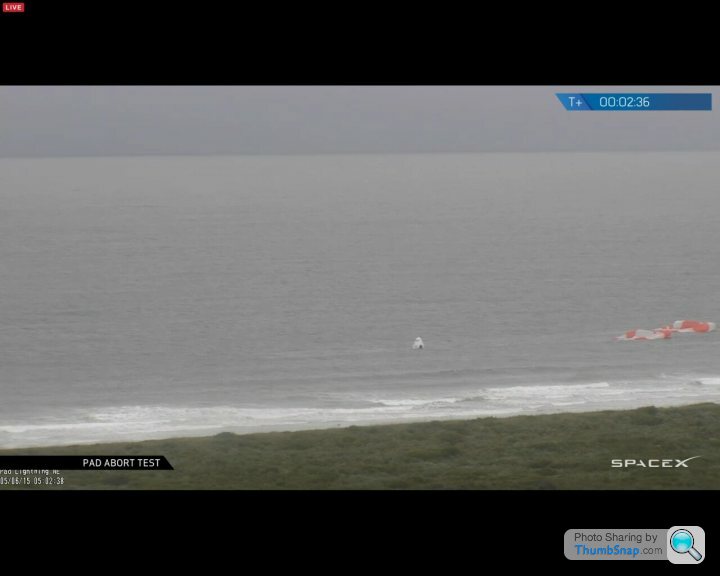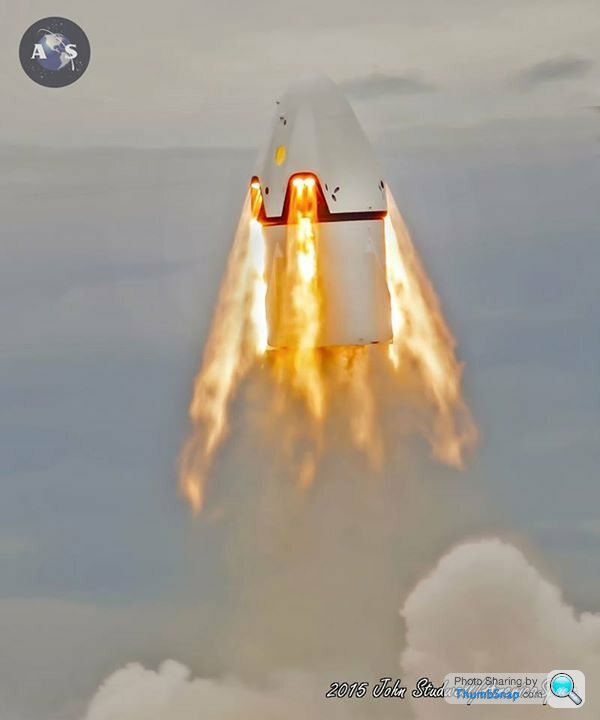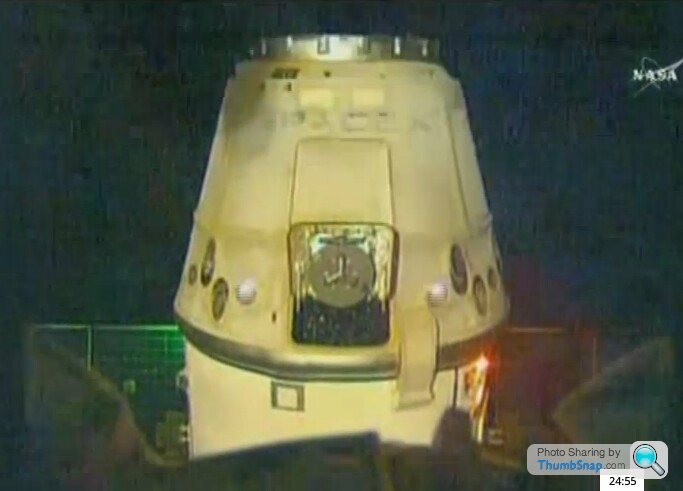SpaceX Tuesday...
Discussion
MartG said:
Looking forward to that.Eric Mc said:
What type of maximum speed does the stage reach during re-entry. I wouldn't have that it was high enough to experience charring.
Is the discolouration perhaps linked to falling back into its own residual exhaust plume?
It seems instinctively right that the maximum speed achieved would be on the way up just before engine cutoff. But the balance between the reduced drag at such high altitude and acceleration due to gravity is probably not something that instinct based on a life near sea level could predict.Is the discolouration perhaps linked to falling back into its own residual exhaust plume?
The first stage engines of most rockets cut out after around 2 1/2 minutes of power. This usually equates to an altitude of around 30 - 40 miles and a speed of under 5,000 mph. When the motors cut and the stage separates, it coasts on up for a minute or two with the speed decaying. Eventually the upward velocity reaches zero and it starts to fall back to earth. It then starts accelerating again purely due to acceleration under gravity.
The question I was asking is, is the speed it reaches as it falls back to earth high enough to generate sufficient heat to char the exterior.
The question I was asking is, is the speed it reaches as it falls back to earth high enough to generate sufficient heat to char the exterior.
Eric Mc said:
The first stage engines of most rockets cut out after around 2 1/2 minutes of power. This usually equates to an altitude of around 30 - 40 miles and a speed of under 5,000 mph. When the motors cut and the stage separates, it coasts on up for a minute or two with the speed decaying. Eventually the upward velocity reaches zero and it starts to fall back to earth. It then starts accelerating again purely due to acceleration under gravity.
The question I was asking is, is the speed it reaches as it falls back to earth high enough to generate sufficient heat to char the exterior.
Agreed, doesn't seem like anywhere near enough speed to cause this but plenty of flying backwards into its own exhaust which would make a bit of a mess on the outside I suppose.The question I was asking is, is the speed it reaches as it falls back to earth high enough to generate sufficient heat to char the exterior.
It's an impressive picture, despite the landing "issues" they have certainly nailed the accuracy of returning the first stages, it certainly makes the concept seem very doable.
MartG said:
Am I right in thinking this was a test of basically an ejector pod for the crew in case things go wrong on takeoff?They had something similar atop the Saturn V and other manned rockets.
On an unmanned test of the Mercury-Redstone 1 rocket in 1960, the main rocket failed and fell back after only rising 4 inches. Then the Launch Escape System fired, launching the Mercury capsule 4,000 ft into the air to come down safely on parachutes.
http://en.wikipedia.org/wiki/Mercury-Redstone_1
On an unmanned test of the Mercury-Redstone 1 rocket in 1960, the main rocket failed and fell back after only rising 4 inches. Then the Launch Escape System fired, launching the Mercury capsule 4,000 ft into the air to come down safely on parachutes.
http://en.wikipedia.org/wiki/Mercury-Redstone_1
Beati Dogu said:
They had something similar atop the Saturn V and other manned rockets.
On an unmanned test of the Mercury-Redstone 1 rocket in 1960, the main rocket failed and fell back after only rising 4 inches. Then the Launch Escape System fired, launching the Mercury capsule 4,000 ft into the air to come down safely on parachutes.
http://en.wikipedia.org/wiki/Mercury-Redstone_1
All manned systems, except for the Space Shuttle and Voshkod, had a crew escape system of some sort or other. Most have been tractor style launch escape towers, which are designed to pull the capsule away from a wayward or exploding booster (Mercury, Apollo, Soyuz, Orion).On an unmanned test of the Mercury-Redstone 1 rocket in 1960, the main rocket failed and fell back after only rising 4 inches. Then the Launch Escape System fired, launching the Mercury capsule 4,000 ft into the air to come down safely on parachutes.
http://en.wikipedia.org/wiki/Mercury-Redstone_1
Vostok used an ejection seat system as did Mercury. Voshkod was a cobbled together spacecraft based on the Vostok and had no method of escape. In fact, it was so patched together as a system that the crew only wore tracksuits.
Dragon is different in that the escape rockets are "pushers" rather than "pullers - and therefore there is a weight saving due to the lack of the tower mechanism.
Gassing Station | Science! | Top of Page | What's New | My Stuff




